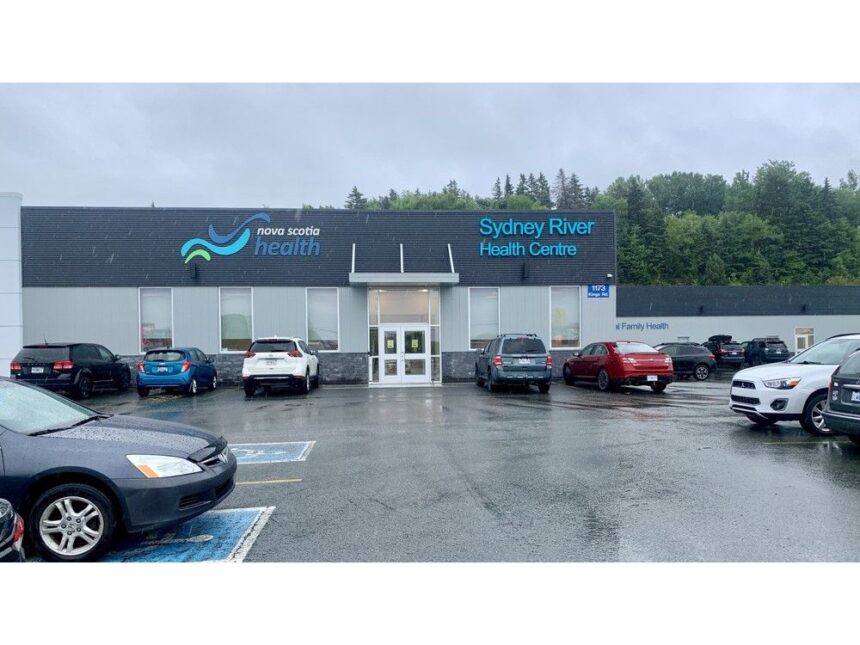The soft morning light spills through the tall windows of the Sydney River Health Centre as Dr. Janet MacNeil steps into her new exam room. She runs a hand along the pristine countertop, a small smile forming at the corners of her mouth. After years of planning, construction delays, and community anticipation, the centre is finally ready to welcome patients.
“Some mornings I’d drive by during construction and wonder if we’d ever get here,” Dr. MacNeil tells me, adjusting a framed medical degree on the freshly painted wall. “But this is a pretty big day for all of us—and especially for Cape Breton.”
The 18,000-square-foot facility officially opened its doors last week, marking a significant moment for healthcare access in the Sydney River area. While many rural communities across Nova Scotia face diminishing medical services, this $12 million investment stands as a counterpoint to that troubling trend.
Inside the building, the contrast with older medical facilities is immediately apparent. Natural light floods the common areas, exam rooms feature state-of-the-art equipment, and the building’s layout was designed with both efficiency and comfort in mind. What strikes me most, however, is the buzz of activity—healthcare workers moving with purpose, the gentle hum of conversation in waiting areas, signs of a system coming alive.
For local resident Martha Gillis, the centre’s opening couldn’t have come at a better time. I find her in the waiting area, her walking cane propped beside her chair. “I’ve been waiting three years to see a specialist about my hip,” she says, lowering her voice as if sharing a secret. “My daughter used to drive me all the way to Halifax. Now I can take the bus here myself.”
Martha’s experience reflects the healthcare reality for many Cape Breton residents. According to Nova Scotia Health data, patients in the eastern zone have historically traveled farther for specialized care than their counterparts in Halifax, often driving hours for appointments that last minutes.
Dr. Trevor Boudreau, one of the physicians relocating his practice to the new facility, explains the significance: “Healthcare infrastructure isn’t just about buildings. It’s about creating community anchors that make it easier to recruit professionals and easier for patients to access care.”
The centre brings together family physicians, specialists, mental health services, and diagnostic facilities under one roof—a model increasingly favored by younger healthcare professionals who prefer collaborative practice environments.
Walking through the facility’s rehabilitation area, I meet physiotherapist Dana Campbell as she arranges equipment in her new treatment space. “I grew up here in Cape Breton but trained in Ontario,” she tells me. “I always wanted to come back, but the professional opportunities were limited. This centre was actually a big part of my decision to return home.”
Her story highlights one of the centre’s less visible benefits: its potential role in addressing the region’s healthcare staffing challenges. Nova Scotia currently has over 130,000 residents without a family doctor, with Cape Breton disproportionately affected. While the new building alone won’t solve this crisis, officials hope it will serve as an attraction point for medical professionals considering practicing in the region.
Not everyone shares the unbridled enthusiasm, however. Community advocate James MacKenzie points out the bigger picture during our phone conversation. “The building is beautiful, and we need it—no question. But buildings don’t solve systemic problems,” he says. “We still have ambulances lined up at emergency departments and people waiting years for surgeries. One facility doesn’t fix that.”
His concerns reflect tensions within Nova Scotia’s ongoing healthcare transformation. While the province has committed over $400 million to healthcare infrastructure improvements, critics argue these investments must be paired with systemic reforms addressing care delivery, professional compensation, and regional equity.
Back at the centre, I observe the small moments that make the facility more than just a building: a receptionist greeting a nervous first-time patient by name; a doctor and nurse practitioner consulting in the hallway about a shared case; an elderly couple helping each other navigate the new space, map in hand.
For Sydney River resident Eleanor MacDonald, these human touches matter most. I meet her outside as she’s leaving her first appointment. “My doctor’s office used to be in this tiny old building with stairs I could barely manage,” she explains, gesturing toward her walker. “Today I actually enjoyed coming to a medical appointment. When you’re dealing with health problems, that environment makes a difference.”
The centre represents more than improved healthcare access—it embodies a community’s determination to maintain vital services in the face of rural decline. Throughout Cape Breton, many towns have watched hospitals downgrade services or close entirely. The new facility stands as a counternarrative to that story.
As the afternoon sun shifts through the windows, I notice Dr. MacNeil in deep conversation with a colleague by the staff entrance. They pause to let a patient pass, then continue their discussion, pointing occasionally at a tablet they’re sharing. It’s a small moment that captures the centre’s potential: professionals working together, technology enabling collaboration, and patients moving through a system designed around their needs.
“We’ve been planning this place for so long that it almost didn’t seem real,” Dr. MacNeil says as we conclude our conversation. “Now that we’re actually seeing patients, it feels like we’re delivering on a promise.”
As I drive away from the Sydney River Health Centre, I notice several cars pulling into the parking lot—more patients arriving for afternoon appointments. The building’s large windows reflect the surrounding landscape, a deliberate architectural choice that connects the facility to the community it serves. For today at least, Cape Breton’s healthcare story contains a chapter of progress.






